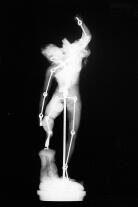Continuity of lead-silver production in the area of Cartagena-La Unión (Spain) after the Phoenician trade crisis of the 6th century BC
Continuité de la production de plomb-argent dans la région de Cartagena-La Unión (Espagne) après la crise du commerce phénicien du VIe siècle av. J.-C.
Résumé
The 6th century BCE is marked by major changes in the Mediterranean trade routes. These changes had a significant impact on the production of silver-lead in the Iberian Peninsula, which was previously thought to have come to an abrupt end.
However, the study of litharge from the early 5th century BCE to the first half of the 3rd century BCE, from three sites in the Alicante region, demonstrates that the types, textures and compositions of litharge remain unchanged after the crisis in Phoenician trade. Thus, although no production workshops have been found in the Cartegena mining district, it is possible to affirm that the cupellation processes used at the beginning of the first millennium BCE continued until the 3rd century BCE.
Lead isotopic analysis of the litharge and two lead artefacts indicate that they come from ores from the very rich mines of Cartagena-La Unión, which were extensively exploited between the 8th and 6th centuries BCE.
Despite a major decline in mining and metallurgical production and considerable changes in the networks of exchange in the Mediterranean, the same production chain persisted from lead extraction to the type of metallurgy practised. The economic crisis does not therefore lead to a cessation of production, but the quantity of lead (and silver) produced would probably be significantly lower.
| Origine | Fichiers éditeurs autorisés sur une archive ouverte |
|---|




